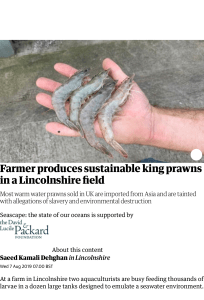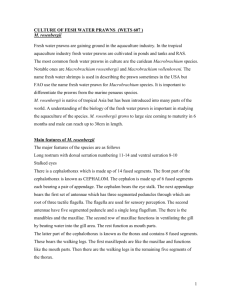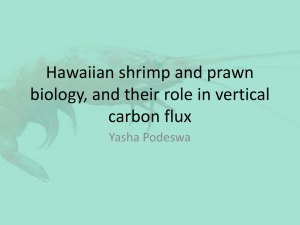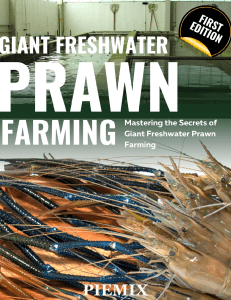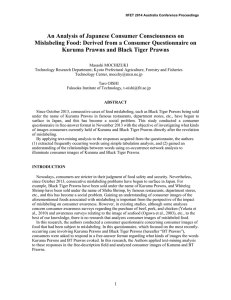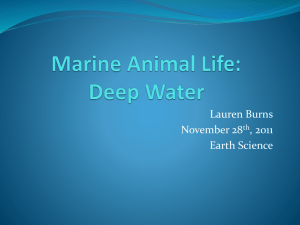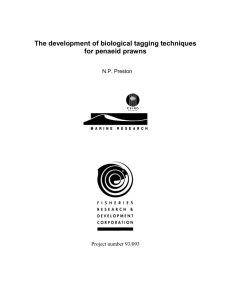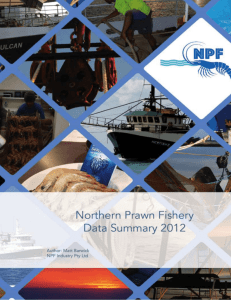Several Honours projects focusing on different aspects of
advertisement
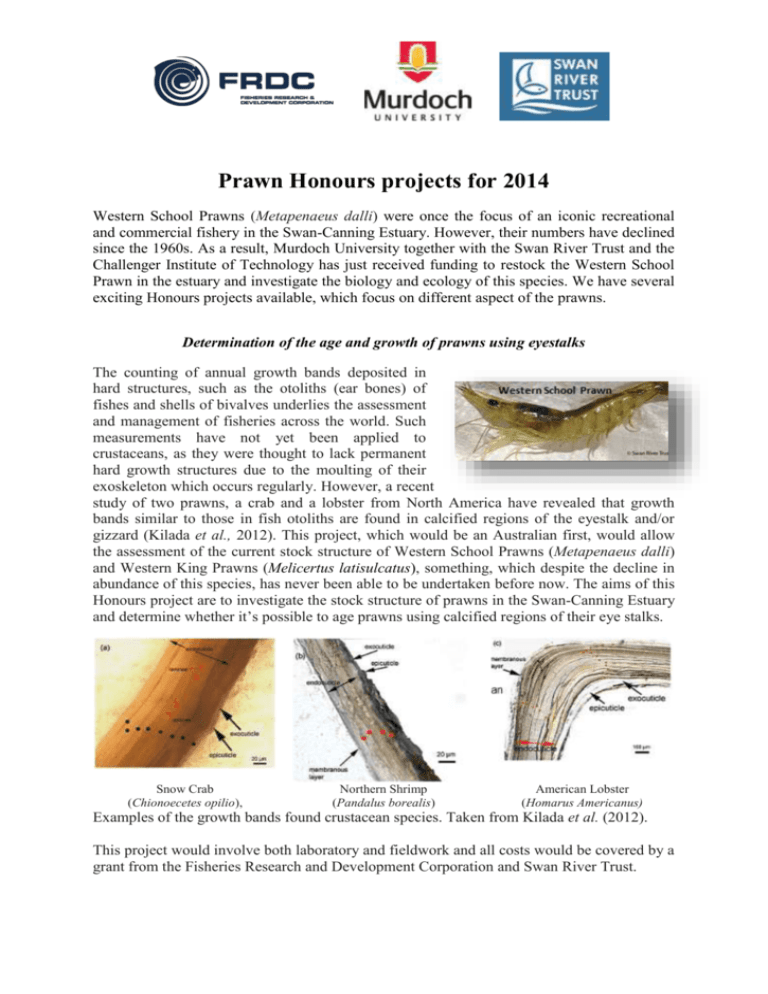
Prawn Honours projects for 2014 Western School Prawns (Metapenaeus dalli) were once the focus of an iconic recreational and commercial fishery in the Swan-Canning Estuary. However, their numbers have declined since the 1960s. As a result, Murdoch University together with the Swan River Trust and the Challenger Institute of Technology has just received funding to restock the Western School Prawn in the estuary and investigate the biology and ecology of this species. We have several exciting Honours projects available, which focus on different aspect of the prawns. Determination of the age and growth of prawns using eyestalks The counting of annual growth bands deposited in hard structures, such as the otoliths (ear bones) of fishes and shells of bivalves underlies the assessment and management of fisheries across the world. Such measurements have not yet been applied to crustaceans, as they were thought to lack permanent hard growth structures due to the moulting of their exoskeleton which occurs regularly. However, a recent study of two prawns, a crab and a lobster from North America have revealed that growth bands similar to those in fish otoliths are found in calcified regions of the eyestalk and/or gizzard (Kilada et al., 2012). This project, which would be an Australian first, would allow the assessment of the current stock structure of Western School Prawns (Metapenaeus dalli) and Western King Prawns (Melicertus latisulcatus), something, which despite the decline in abundance of this species, has never been able to be undertaken before now. The aims of this Honours project are to investigate the stock structure of prawns in the Swan-Canning Estuary and determine whether it’s possible to age prawns using calcified regions of their eye stalks. Snow Crab (Chionoecetes opilio), Northern Shrimp (Pandalus borealis) American Lobster (Homarus Americanus) Examples of the growth bands found crustacean species. Taken from Kilada et al. (2012). This project would involve both laboratory and fieldwork and all costs would be covered by a grant from the Fisheries Research and Development Corporation and Swan River Trust. Investigating the burrowing habitats and daily routine of the Western School Prawn Prawns spend a large part of their life in contact with the seabed and, as such, the abundance of many prawn species has been linked to characteristics of the sediment. Many prawn species also undergo pronounced diel (day/night) changes in their behaviour; burying themselves during the day and emerging at night to feed. This burying reduces their energy expenditure and makes them less susceptible to predation. A multitude of studies conducted around the world have described the method and depth of burying of multiple prawn species as well as investigating their daily patterns of emergence and activity. However, despite the importance of the Western School Prawn (Metapenaeus dalli) to both commercial and recreational fishers in the Swan-Canning and Peel-Harvey estuaries, very little is known about the way this species interacts with the sediment and its activity patterns. This project aims to address these knowledge gaps by: 1) Collecting Western School Prawns from the Swan-Canning Estuary and describing the method of burying from tank experiments conducted in the laboratory. 2) Comparing rates of and depths of burial among various life stages of the Western School Prawn. 3) Describing the patterns of emergence and activity in the Western School Prawn under laboratory conditions (see figure below). 4) Comparing these results with data on prawn abundance collected at regular intervals throughout the day and night in the Swan-Canning Estuary. Pattern of emergence (a) and activity (b) of Brown Shrimp (Penaeus aztecus) under laboratory conditions. Taken from Dall et al. (1990). If the student wished these techniques could also be applied to the Western King Prawn. This project would involve both laboratory and fieldwork and all costs would be covered by a grant from the Fisheries Research and Development Corporation and Swan River Trust. Determining the contribution of prawns to the diets of fishes in the Swan-Canning Estuary The abundance of the Western School Prawns (Metapenaeus dalli) has declined since the Western King Prawns 1960s, however, there is no clear explanation as to why this has occurred. One of the factors hypothesised to have played a role is the increase in predatory fish species, such as the Black Bream (Acanthopagrus butcheri) and the Weeping Toadfish (Torquigener pleurogramma). The aim of this Honours project is to determine the diets of the above two key fish species and other potential predators e.g. Gobbleguts (Apogon rueppellii), Whiting and Flathead species and the Yellow-eye Mullet (Aldrichetta forsteri) and assess what contribution Western School Prawns make to the diets of those species. Although the diets of most of these species have been investigated previously, those samples were collected several decades ago and also during the day. Therefore, as prawns spend the day buried and emerge at night (during which time they are venerable to predation), the proportion of prawns in the diets of these fish species may have been underestimated previously. Laboratory feeding trials will also be conducted using juvenile and adult prawns together with Black Bream, Weeping Toad fish and the Brown Jellyfish (Phyllorhiza punctata) by a PhD student and the Honours student would be welcome to use this set up to conduct additional experiments of their choosing. This project would involve both laboratory and fieldwork and all costs would be covered by a grant from the Fisheries Research and Development Corporation and Swan River Trust. ---------------- For more information on any of these projects and to apply please contact Dr James Tweedley (j.tweedley@murdoch.edu.au) and Professor Neil Loneragan (n.loneragan@murdoch.edu.au).

